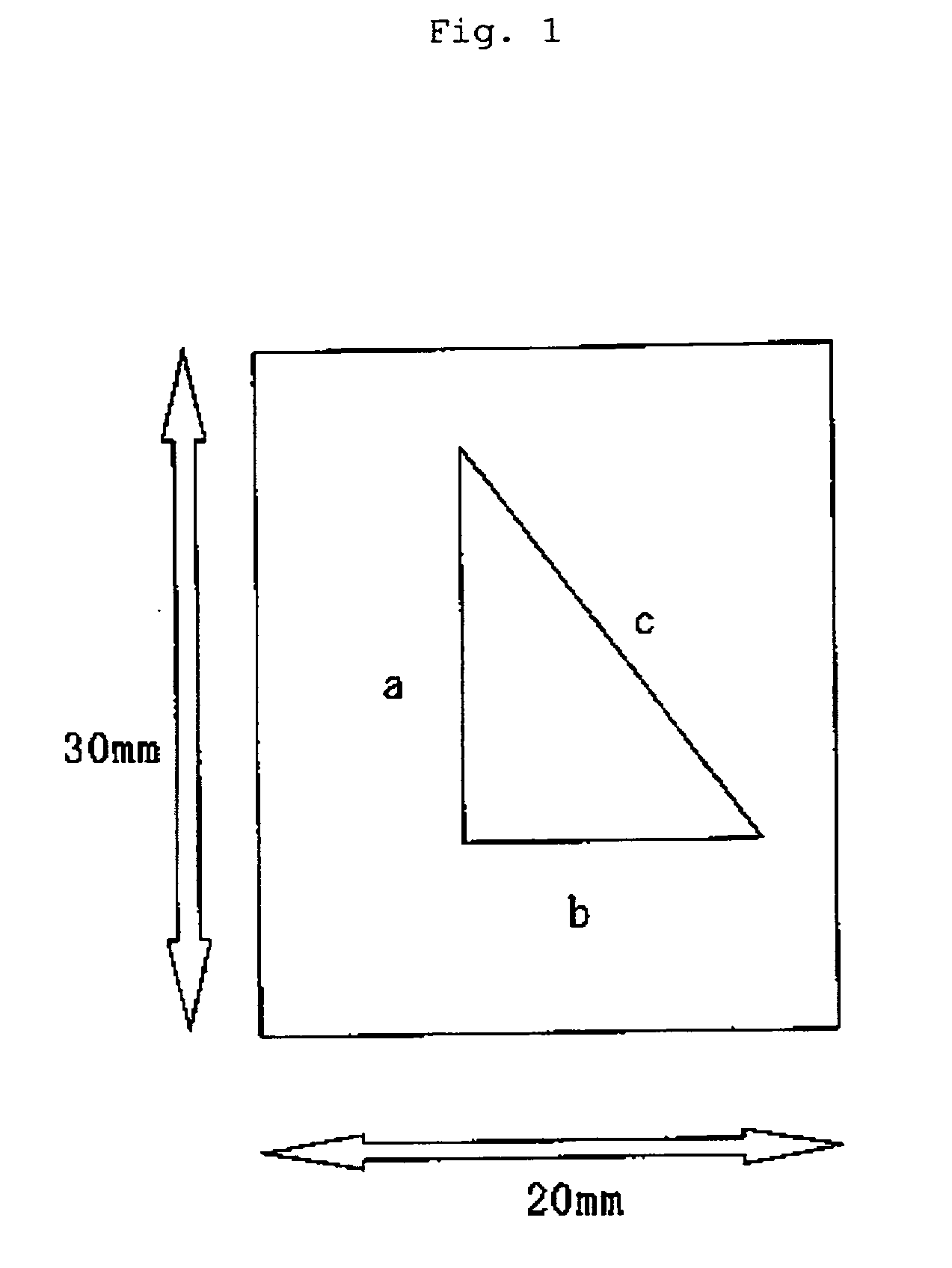Porous films with chemical resistance
a technology of porous films and chemical resistance, applied in the field of porous films, can solve the problems of difficult production process, difficult to achieve, and low rate of open pores on the surface, and achieve excellent chemical resistance and pore properties, excellent properties, and excellent chemical resistan
- Summary
- Abstract
- Description
- Claims
- Application Information
AI Technical Summary
Benefits of technology
Problems solved by technology
Method used
Image
Examples
preparation example 1
[0102] Production of Porous Film Base 1
[0103] A film-forming composition was prepared by adding 30 parts by weight of a polyvinylpyrrolidone having a molecular weight of 5×104 to 100 parts by weight of “VYLOMAX HR11NN” (trade name, available from Toyobo Co., Ltd.) which is a solution, in solvent NMP, of an amide-imide polymer having a surface tension as polymer alone of 42 mN / m (=dyn / cm) (measured value), a solid content of 15 percent by weight, and a viscosity as solution of 20 dpa·s at 25° C. This film-forming composition was set in temperature at 25° C. and was cast onto a substrate comprising a PET sheet (Type S, available from DuPont Teijin Films, Ltd., having a surface tension of 39 mN / m (=dyn / cm) (measured value)) using a film applicator. Immediately after casting, the cast article was placed in a vessel and held at humidity of about 100% and a temperature of 50° C. for four minutes. The article was subjected to phase conversion by immersing in water, thus solidifying and dr...
preparation example 2
[0105] Production of Porous Film Base 2
[0106] Porous Film Base 2 having a thickness of about 50 μm was prepared by the procedure of Preparation Example 1, except for using 33.3 parts by weight of the polyvinylpyrrolidone having a molecular weight of 5×104.
[0107] The membrane structure of the film was observed to find that pores in the substrate-facing surface of the film had an average pore size of about 0.5 μm, pores in the air-facing surface of the film had an average pore size of about 0.6 μm, and the film had substantially homogenous inside and had communicating micropores all over its inside. The film had an inner porosity of 70%.
preparation example 3
[0108] Production of Porous Film Base 3
[0109] A polyimide precursor solution was prepared by dissolving 3,3′,4,4′-biphenyltetracarboxylic acid dianhydride (s-BPDA) and 4,4′-diaminodiphenyl ether (DADE) in NMP to a total concentration of the two monomer components of 18 percent by weight in a molar ratio of DADE to s-BPDA of 0.994, and carrying out polymerization at 40° C. for six hours. A film-forming composition was then prepared by adding 33.3 parts by weight of a polyvinylpyrrolidone having a molecular weight of 5×104 to 100 parts by weight of the polyimide precursor solution. This film-forming composition was set in temperature at 25° C. and was cast onto a glass plate using a film applicator. Immediately after casting, the cast article was placed in a vessel and held at humidity of about 100% and a temperature of 50° C. for eight minutes. The article was subjected to phase conversion by immersing in water, thus solidifying and drying and thereby yielded a polyimide precursor p...
PUM
| Property | Measurement | Unit |
|---|---|---|
| Pore size | aaaaa | aaaaa |
| Thickness | aaaaa | aaaaa |
| Length | aaaaa | aaaaa |
Abstract
Description
Claims
Application Information
 Login to View More
Login to View More - R&D
- Intellectual Property
- Life Sciences
- Materials
- Tech Scout
- Unparalleled Data Quality
- Higher Quality Content
- 60% Fewer Hallucinations
Browse by: Latest US Patents, China's latest patents, Technical Efficacy Thesaurus, Application Domain, Technology Topic, Popular Technical Reports.
© 2025 PatSnap. All rights reserved.Legal|Privacy policy|Modern Slavery Act Transparency Statement|Sitemap|About US| Contact US: help@patsnap.com

